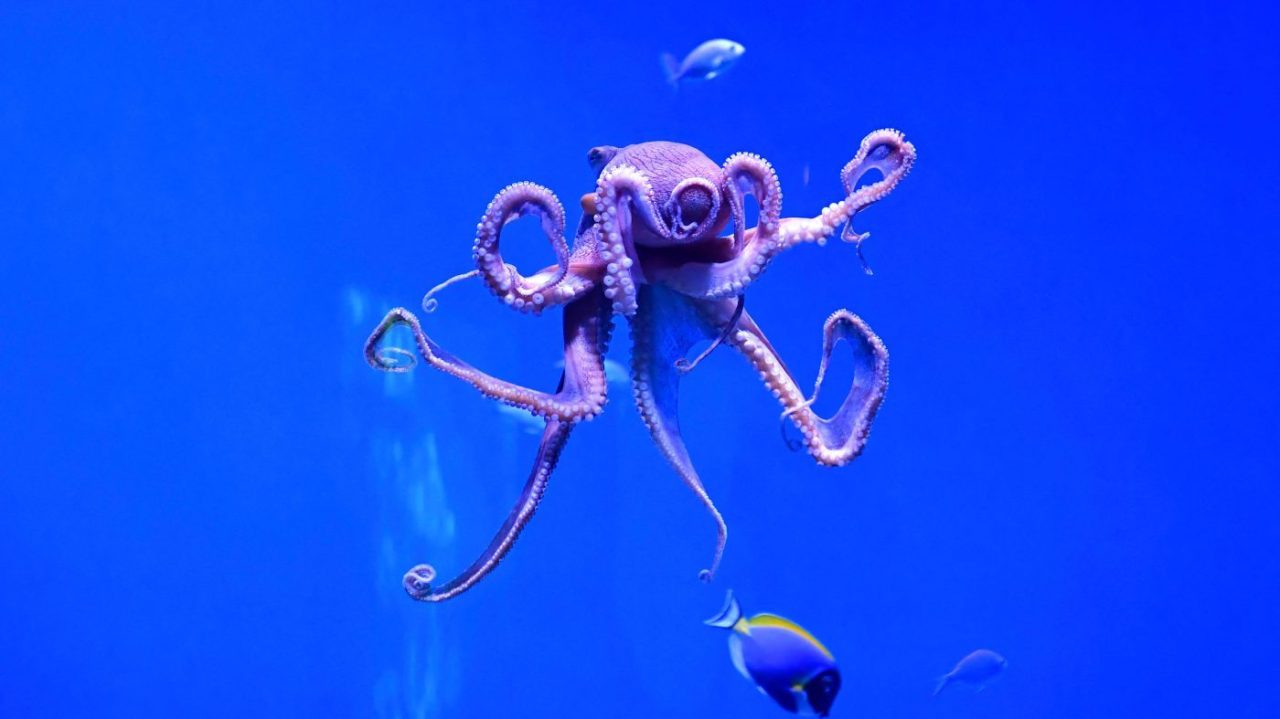There’s good reason to believe fish, amphibians, molluscs and insects are sentient, according to a new statement signed by three dozen scientists.
The New York Declaration on Animal Awareness believes that current scientific research shows that such widespread animal awareness is a “real possibility” – something that scientists and policymakers must take into account when considering the risks to these animals. a little.
The statement came at an event at New York University on Friday, amid a lively and sometimes heated debate among scientists about the current state of the science of animal consciousness and the wisdom of issuing such a statement.
The problem with thinking about animal consciousness, London School of Economics philosopher Jonathan Birch told attendees, is that it “immediately exposes us to severe limitations of our imagination.”
This question has been included in the titles of many classic papers and books, such as philosopher Thomas Nagel’s seminal 1974 essay “What would it be like to be a bat?” Primatologist Franz de Waal’s 2017 book Are We Smart Enough to Know How Smart Animals Are?
Many scientists and philosophers believe that human limitations—as a species with a rich internal monologue, a reliance on vision, and a culture based on spoken language—may blind us to how perception works in other species .
“Sometimes these limitations of imagination lead people to doubt whether the scientific evidence can answer these questions,” Burch said.
“But I think that’s wrong,” he added. “I personally don’t think other animals have verbal inner monologues like I do. But equally, other animals may have forms of consciousness that we lack,” such as the subjective experience of bats using echolocation to navigate dark forests.
The statement was brief — just three paragraphs — and very restrained in its wording. It does not argue that animal consciousness is certain or proven. Instead, it argued that decades of literature now show “strong scientific support” for consciousness in mammals and birds, and the “real possibility” of consciousness in creatures ranging from reptiles to octopuses, crabs and insects. .
The signatories agreed that as long as this possibility exists, “we should consider welfare risks and use evidence to guide our response to these risks.”
Event attendees were not universally supportive of the idea. One scientist in the front row told Birch he was worried the statement would be seen as an irresponsible exaggeration of the evidence.
“I’m not sure this statement is a good idea,” he said. All scientists, he said, “are familiar with articles summarizing studies that people don’t trust — because they feel they’re cherry-picking the data and they’re relying on research that’s not objective.”
But Burch thought the statement was actually quite conservative. “This is not a propaganda effort. It describes the state of the science as fairly as possible.
He added that while the signatories themselves disagreed on the dimensions of animal consciousness and its ethical implications, they agreed that “significant steps have been taken over the past decade” and that these needed to be part of the conversation.
More than a decade ago, the Cambridge Declaration on Consciousness found that mammals, birds, and other animals have “the capacity to exhibit intentional behavior” and that “humans are not the only ones to possess the neural basis for consciousness.”
During this time, scientists made progress in their understanding of animal consciousness. According to a summary of the recent research in Quanta Magazine, “For example, we now know that octopuses feel pain, cuttlefish remember details of specific past events… and zebrafish show signs of curiosity.”
In the insect world, Quanta pointed out that “bees show obvious play behavior, while fruit flies are affected by the social environment and have unique sleep patterns. At the same time, crayfish will show anxiety-like states, and these states can Change with anti-anxiety medication.
A series of studies followed mounting evidence that fish and reptiles are self-aware. Reptiles, in particular, are the ancestors of mammals and birds, the two orders that have the strongest evidence for sentience.
“If we accept that mammals and birds are conscious, then consciousness either evolved at least twice in each lineage or is the ancestor of all animals, in which case reptiles may also be conscious,” Anna Weir Jinson said.
When it comes to whether reptiles or fish experience pain, a big question when considering their welfare, Wilkinson acknowledged that recent research suggests fish have different neural structures than mammals.
But she argued, “Just because birds can’t fly without feathers, doesn’t mean bats can’t fly. They don’t have feathers—they just do it through different mechanisms.”
“It seems unlikely that the type of consciousness in reptiles is similar to the type of consciousness in mammals,” she added. “I think that’s a challenge we need to address.”
Copyright 2024 Nexstar Media Inc. All rights reserved. This material may not be published, broadcast, rewritten or redistributed.
#Dozens #scientists #irresponsible #ignore #widespread #consciousness #animal #world
Image Source : thehill.com
